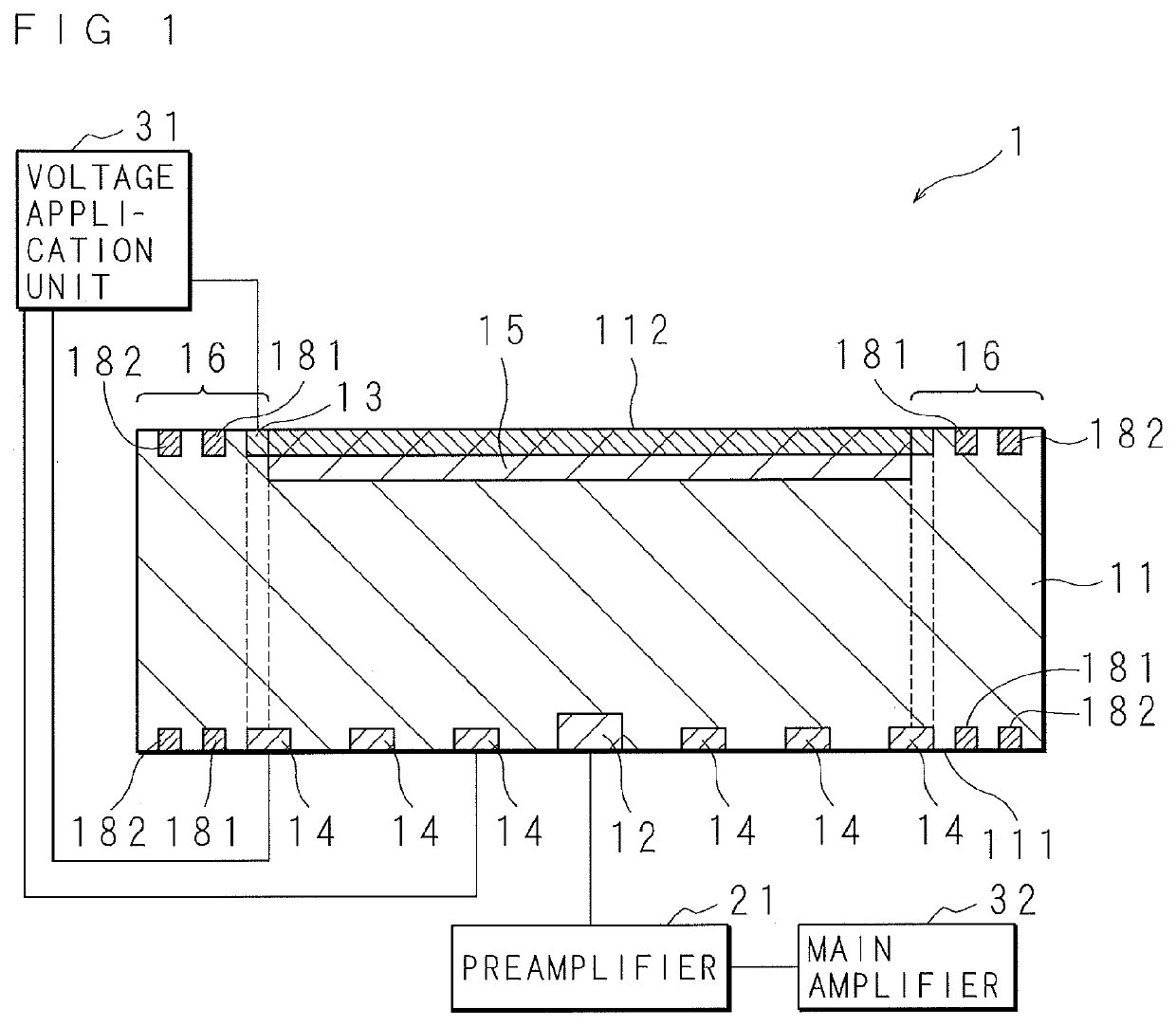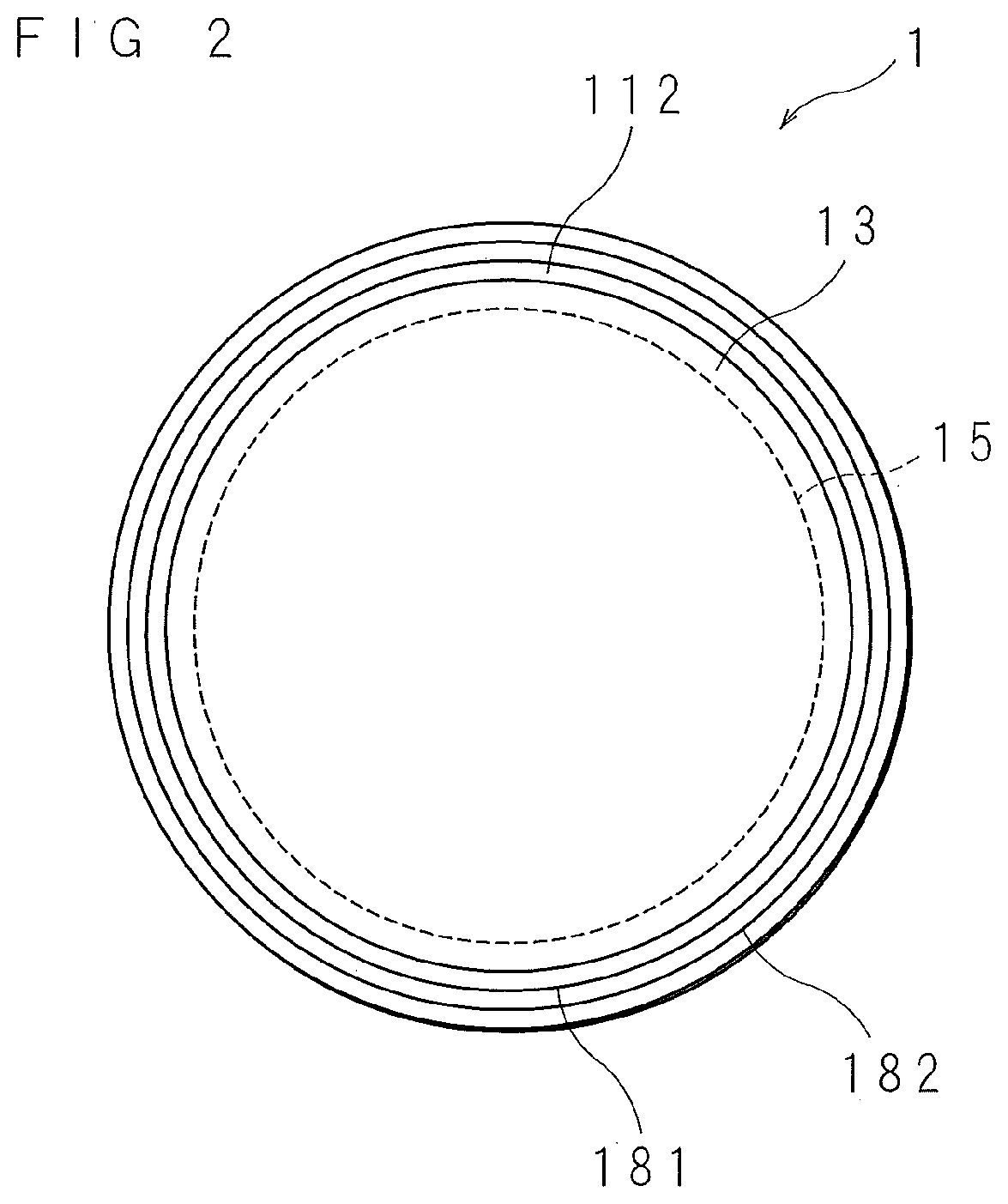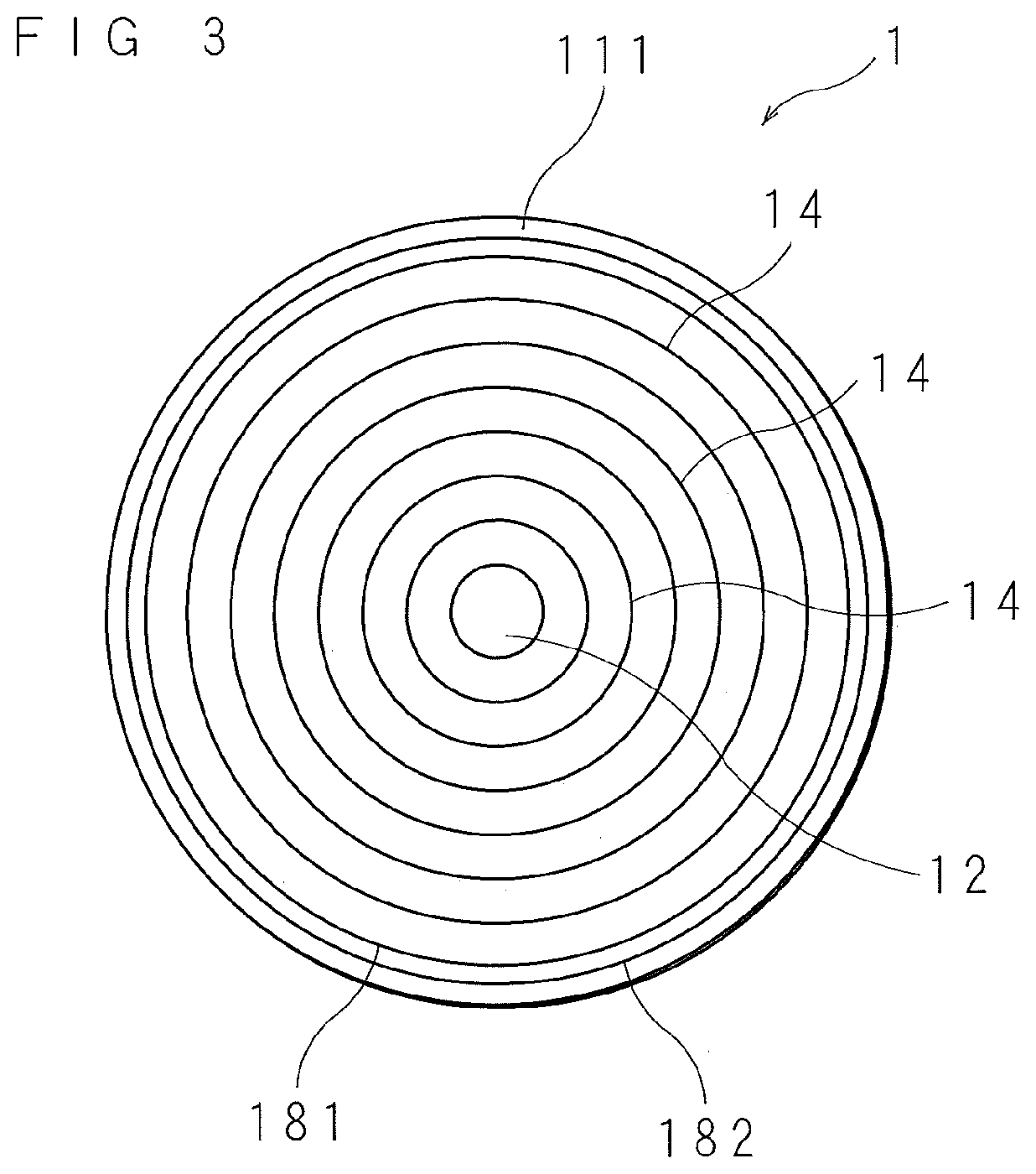Radiation detection element, radiation detector and radiation detection device
a radiation detection element and detector technology, applied in the direction of radiation intensity measurement, instruments, x/gamma/cosmic radiation measurement, etc., can solve the problems of increasing size and complicating structure, and achieve the effect of increasing the size of the radiation detection element and improving the radiation detection efficiency
- Summary
- Abstract
- Description
- Claims
- Application Information
AI Technical Summary
Benefits of technology
Problems solved by technology
Method used
Image
Examples
embodiment 1
[0042]FIG. 1 is a schematic cross-sectional view of a radiation detection element 1 according to Embodiment 1. The radiation detection element 1 is a silicon drift detection element. The radiation detection element 1 is provided with a Si layer 11 made of silicon (Si) having a discoid shape. The constituent of the Si layer 11 is an n-type Si. The Si layer 11 is a semiconductor part. The Si layer 11 has a first surface 111 and a second surface 112 located on the reverse side of the first surface 111. The second surface 112 is an incident surface on which radiation is mainly incident. FIG. 2 is a schematic plan view of the radiation detection element 1 according to Embodiment 1 when viewed from the second surface 2 side. FIG. 3 is a schematic plan view of the radiation detection element 1 according to Embodiment 1 when viewed from the first surface 111 side.
[0043]At the center of the first surface 111, a signal output electrode 12 is disposed for outputting a signal when radiation is ...
embodiment 2
[0066]FIG. 10 is a schematic plan view of the radiation detection element 1 according to Embodiment 2 when viewed from the first surface side 111. Multiple sets of multiple curved electrodes 14 each having a ring shape are disposed on the first surface 111 of the Si layer 11. FIG. 10 shows an example in which four sets of multiple curved electrodes 14 are disposed. Any number of sets of the multiple curved electrodes such as eight sets or the like is appropriate without being limited to four sets. The multiple sets of the multiple curved electrodes 14 are arranged evenly around the center of the first surface 111. Though FIG. 10 shows an example in which three curved electrodes 14 are included in each set, more curved electrodes 14 are disposed in practice. At the position surrounded by the multiple curved electrodes 14 of each set, a signal output electrode 12 is disposed. The outermost curved electrodes 14 included in the respective sets of the multiple curved electrodes 14 are pa...
PUM
| Property | Measurement | Unit |
|---|---|---|
| distance | aaaaa | aaaaa |
| distance | aaaaa | aaaaa |
| voltage | aaaaa | aaaaa |
Abstract
Description
Claims
Application Information
 Login to View More
Login to View More - R&D
- Intellectual Property
- Life Sciences
- Materials
- Tech Scout
- Unparalleled Data Quality
- Higher Quality Content
- 60% Fewer Hallucinations
Browse by: Latest US Patents, China's latest patents, Technical Efficacy Thesaurus, Application Domain, Technology Topic, Popular Technical Reports.
© 2025 PatSnap. All rights reserved.Legal|Privacy policy|Modern Slavery Act Transparency Statement|Sitemap|About US| Contact US: help@patsnap.com



